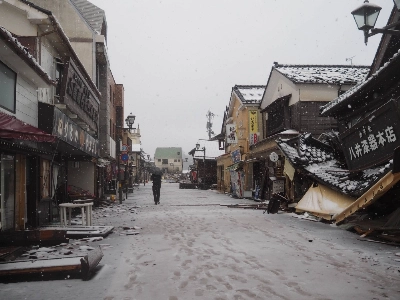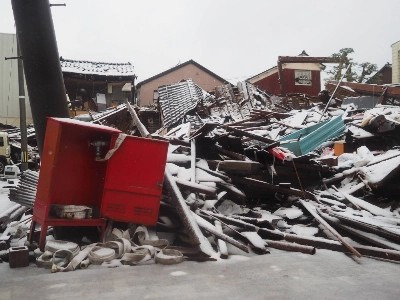Snow crunches beneath his boots as chef Toshiya Ikehata’s weary eyes peer through the backdoor into the kitchen, where custard-filled ramekins lay broken on the floor and metal racks are toppled over. He lets out a deep sigh, his breath visible in the frigid air, as he stands under frozen persimmons dangling from thin branches.
Outside of his restaurant in Wajima, Ishikawa Prefecture, it’s eerily silent. He is surrounded by leveled buildings, blocks of abandoned homes and the charred rubble of the central morning market, a once lively corner of the city now partially in ruin.
It’s six days after the quake, but Ikehata has lost his sense of time.




















With your current subscription plan you can comment on stories. However, before writing your first comment, please create a display name in the Profile section of your subscriber account page.